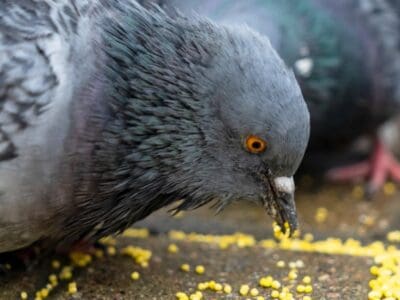Purussaurus
Purussaurus brasiliensis
Purussaurus had a bite force that is higher than that of any creature that has ever lived
Advertisement
Purussaurus Scientific Classification
- Kingdom
- Animalia
- Phylum
- Chordata
- Class
- Reptilia
- Order
- Crocodilia
- Family
- Alligatoridae
- Genus
- Purussaurus
- Scientific Name
- Purussaurus brasiliensis
Read our Complete Guide to Classification of Animals.
Purussaurus Conservation Status
Purussaurus Facts
- Prey
- Smaller crocodilans, mammals, birds, amphibians and reptiles
- Fun Fact
- Purussaurus had a bite force that is higher than that of any creature that has ever lived
- Biggest Threat
- Climate change
- Most Distinctive Feature
- Robust head with massive teeth for holding prey
- Distinctive Feature
- Giant jaws with a massive bite force
- Habitat
- Small inland sea in South America
- Diet
- Carnivore
- Type
- Extinct crocodilian
- Special Features
- The bite force of the purrusaurus is higher than that of any other animal
- Origin
- South America
- Number Of Species
- 3
- Location
- Brazil, Peru Venezuela
Purussaurus Physical Characteristics
- Weight
- 8.4 tons
- Length
- 41–43 feet
- Venomous
- No
- Aggression
- High
View all of the Purussaurus images!
Purussaurus is one of the largest crocodilians to have ever lived. It is a member of the giant caiman family, which dominated central South America during the Miocene epoch (about eight million years ago). Like other crocodilian species, it could attack large prey and had a massive bite force equivalent to about 7 metric tons. Skulls of this animal were found in Peru, Brazil, northern Venezuela, and other parts of South America.
Description and Size
The Purussaurus is the largest crocodilian and one of the largest reptiles that ever roamed the earth after the extinction of the dinosaurs. There have been three identified species under this genus. Purussaurus brasiliensis was the first recognized species of this reptilian. The other two species are P. neivensis and P. mirandai.
The head of this giant caiman was about 5 feet long, almost as long as the entire body of most caiman species existing today. The robust head had big, sharp teeth, which helped it grip and hold on to its prey. The teeth vary slightly between the species but are generally about 2 inches long and slightly curved backward. The nature of the fossil skull suggests that this animal’s bite force was massive enough to perforate the prey’s bones and shatter their internal organs.
The exact size of the Purussaursus‘ body remains unknown since only the skull fossils have been found. However, the size has been superficially estimated to range from 36–43 feet. There are debates about the full body size of this animal. Some researchers believe it would have been 41 feet long and weighed 8.4 tons. Others estimate it to be 33.8 feet long with a 5.69-ton body mass. The commonly agreed conclusion is that it was a massive animal. The rib structures and other parts of the reptilian’s body are similar to that of the caimans and crocodiles of today.
Diet—What Did the Purussaurus Eat?
The Purussaurus was the apex predator of its time. It was huge and had the strongest bite force of any animal ever to exist. This animal’s extreme strength and size allowed it to have a wide range of diets. As the main predator in the ecosystem, it fed upon almost all animals, including many large vertebrates.
Like today’s crocodilian predators, Purussaurus were also thought to hunt while skulking in ponds, swamps, and lakes, waiting for prey that came to drink water. It might have also used hunting methods similar to those of present-day alligators and crocs, twisting the organs and bones of their prey and killing them quickly.
Some animals present during the Miocene were reptilians, such as Mourasuchus, Gryposuchus, and Stupendemys. There were also mammals, birds, river dolphins, and the primate Stirtonia. All of these animals were preyed on by Purussaurus. Given the size of this animal, it needed approximately 88 pounds of food daily to thrive. That’s about twenty times what the modern-day American alligator requires.

The Purrussaurus was huge and had the strongest bite force of any animal ever to exist.
©Ornitholestes/PublicDomain – License
Habitat—When and Where Purussaurus Lived
This giant caiman existed in South America towards the end of the Miocene epoch. Fossils of Purussaurus brasiliensis date back about eight million years ago. These remains have been found in locations across Brazil, Venezuela, Colombia, and some other parts of the Amazon region. Back in the Permian, the area where they were found was characterized by an extensive system of wetlands and lakes called the Pebas System. This small inland sea was located in the northern part of South America. It differed from the Amazon we have today because the Andes Mountains—a dominant feature of present-day South America—were still rising.
Threats and Predators
Purussaurus was an apex predator because of its sheer size, massive strength, and incredible bite force. They were able to prey on large animals too. Researchers have even mentioned that if the T. rex lived in the same era as the Purussaurus, it wouldn’t have survived the fearsome teeth and bite force of the crocodilian.
Although the Purussaurus had no predators, it lived in a fragile ecosystem. It was big and powerful, and this feature was also its biggest threat. This is the reason it became extinct a few million years later.
At the time, the Andes Mountains were still rising, leading to changes in drainage patterns throughout the Amazon. These changes negatively affected the Pebas’ environment. At the start of the Pliocene, the Pebas started to drain out, gradually turning into rivers instead of the vast inland seas and lakes. This new environment favored smaller species, and they started thriving while the larger ones died out, including the Purussaurus.
Discoveries and Fossils—Where It Was Found
The fossils of Purussaurus were first discovered in 1892 by a Brazilian researcher called Joao Barbosa Rodrigues at the Purus River, which it was named after. After the species had been found, named, and registered in historical records, there was still lots of guesswork about its habit and size before other skulls were found.
The discovery of other fossils in Peru, Venezuela, Panama, and Colombia gave scientists more insight into this animal’s likely appearance. Scientists were able to confirm that Purusssaurus was the largest crocodilian ever to live, with an estimated length of 41 feet and a weight of 8.4 tons.
Although the general belief is that this caiman only existed about eight million years ago, a study of large bite marks on an ancient 13-million-year-old sloth fossil concluded that it might have come from a Purussaurus. The argument is that none of the prehistoric crocodilian species that existed in the region had such large teeth, except the Purussaurus.
Extinction—When Did It Die Out?
Purussaurus didn’t live for so long on earth. Their extinction was caused by tectonic shifts in the region that led to the rise of the Andes Mountains. As the mountains rose, the swamplands changed radically, and the area lost the large animals that once thrived in it, including the Purussaurus.
The massive animal needed an enormous amount of meat daily to survive and thrive. As soon as large prey started disappearing due to the changing landscape, Purussaurus didn’t have enough food to survive. Although other smaller animals thrived in the new landscape, they weren’t enough food for this giant beast. Hence, they became extinct years after. In the end, the Purussaurus‘ size, which was its greatest strength, also became its weakness.
Similar Animals to the Purussaurus
Similar animals to the Purussaurus include:
- Sarcosuchus — This is an extinct crocodyliform genus seen during the Early Cretaceous. It was a larger, distant relative of the present-day crocodiles.
- Deinosuchus — This extinct alligatoroid crocodilian is related to modern caimans and alligators and lived during the Late Cretaceous Period.
- Rhamphosuchus — This is an extinct gavialid crocodylian that existed during the Pliocene. The fossils have only been found in the Sindh region in Pakistan and the Siwalik Hills of India and Pakistan.
Related Animals
View all 192 animals that start with PPurussaurus FAQs (Frequently Asked Questions)
When was the Purussaurus alive?
Purussaurus lived in the Late Miocene epoch about eight million years ago.
How big was the Purussaurus?
Purussaurs were estimated to be about 41 feet long and weighed about 8.4 tons.
Was Sarcosuchus bigger than Purussaurus?
Purussaurus was among the largest crocodilian ever and is believed to be bigger than Sarcosuchus.
Why did the Purussaurus go extinct?
The large-scale, changing environment was the major reason for the Purussaurus‘ extinction. The climatic changes caused changes in their habitat, which favored small species more than the bigger ones like the Purussaurus.
Was the Purussaurus stronger than the T-Rex?
Purussaurus had a bite force of about seven metric tons, twice as much as a T. rex’s bite.
Thank you for reading! Have some feedback for us? Contact the AZ Animals editorial team.
Sources
- Wikipedia, Available here: https://en.wikipedia.org/wiki/Purussaurus
- Dinopedia, Available here: https://dinopedia.fandom.com/wiki/Purussaurus#Relation_with_other_giant_crocodiles
- Earth Archives, Available here: https://eartharchives.org/articles/the-powerful-bite-of-super-croc-purussaurus/index.html
- All That's Interesting, Available here: https://allthatsinteresting.com/purussaurus


















